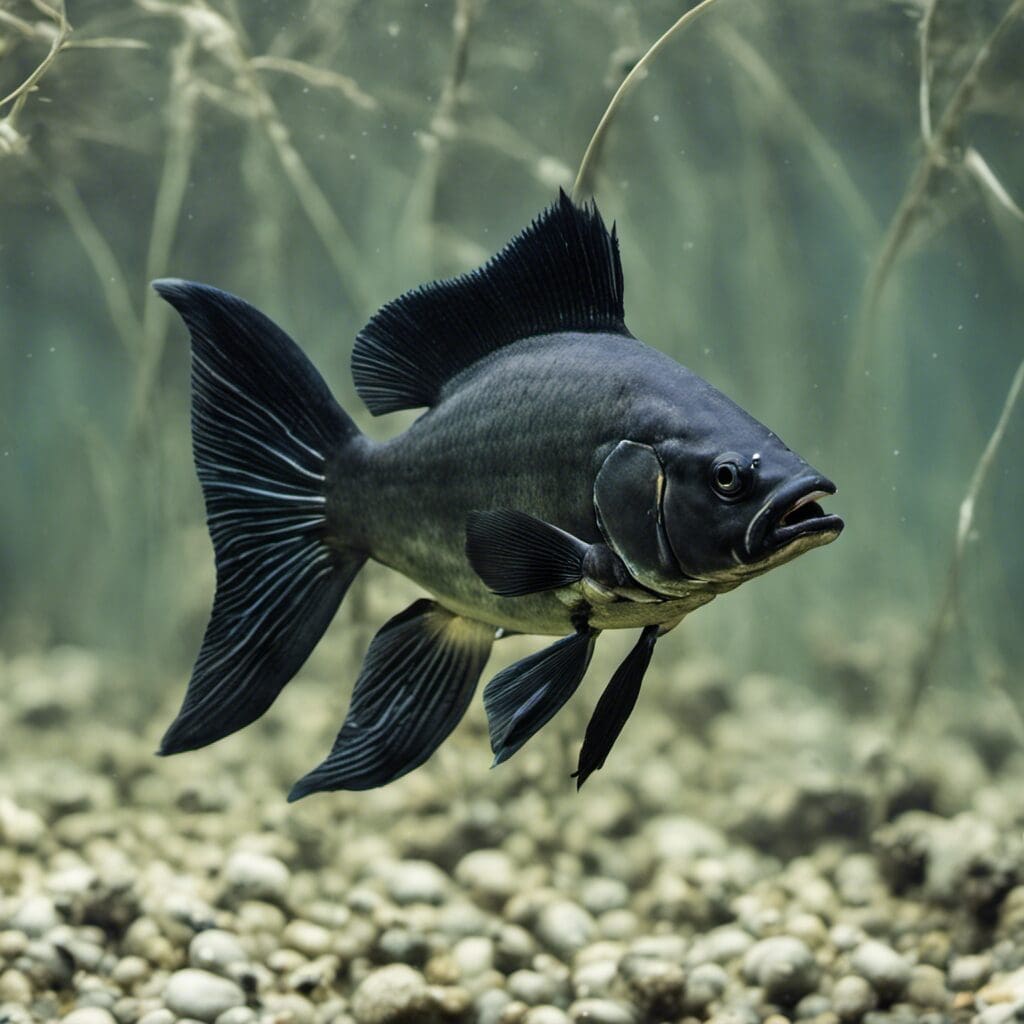Introduction
The Black Bullhead, also known scientifically as Ameiurus melas, is a species of bullhead catfish belonging to the family Ictaluridae.
Conservation Status
The Black Bullhead is currently listed as a species of ‘Least Concern’ by the International Union for Conservation of Nature (IUCN). It is not experiencing any major threats, and conservation efforts mainly focus on maintaining its current population.
Statistics
| Statistic | Average | Range |
|---|---|---|
| Length | 11.5 inches | 4 – 24 inches |
| Weight | 1 lb | 0.5 - 8 lbs |
| Average Lifespan | 7 years | 5 – 10 years |
| Water Temperature | — | 39 – 77°F |
Distribution
This species is known to inhabit various regions across North America, primarily in the United States and parts of Canada. They are sedentary fish and do not migrate.
Habitats
Black Bullheads prefer to live in slow-moving, muddy waters found in lakes, ponds, and streams. They can thrive in a wide range of temperatures, but they typically favor moderate temperatures around 39 to 77°F.
When and Where to See
The Black Bullhead is an opportunistic feeder and most active during the night. They can be spotted throughout the year, but their activity significantly increases during the spring and summer months.
Best Fishing Locations
- Lake Oahe, South Dakota
- Lake Michigan, Wisconsin
- Mississippi River, Minnesota
- Lake Lewisville, Texas
- Spirit Lake, Iowa
General Tips
Look for slow-moving, muddy waters as these are the preferred habitats of the Black Bullhead. They are also known to frequent areas with abundant underwater structure, such as fallen trees, docks and weed beds.
How to Catch
Black Bullheads prefer live baits such as nightcrawlers, minnows, and leeches. The best fishing period is usually at night and during the spring spawning season when they are most active.
Identification Guide
The Black Bullhead has a dark brown to black body with a white or yellowish belly. It can easily be distinguished from other species by its square, not forked tail, and its barbels (whisker-like appendages) surrounding the mouth.
Culinary
Despite their somewhat intimidating appearance, Black Bullheads make for an excellent meal. When cooked, their firm white flesh offers a mild flavor with little to no fishiness. They are commonly used in recipes like filleted catfish, deep-fried catfish, and fish chowder.
Additional Information
Black Bullheads feed on a variety of food, including insects, worms, and smaller fish. They are prey to larger predatory fish such as the Northern Pike and Muskie. Historically, they have been an important food source for many Native American tribes.
References and Further Reading
For further insights about the Black Bullhead, refer to National Oceanic and Atmospheric Administration or International Union for Conservation of Nature.

